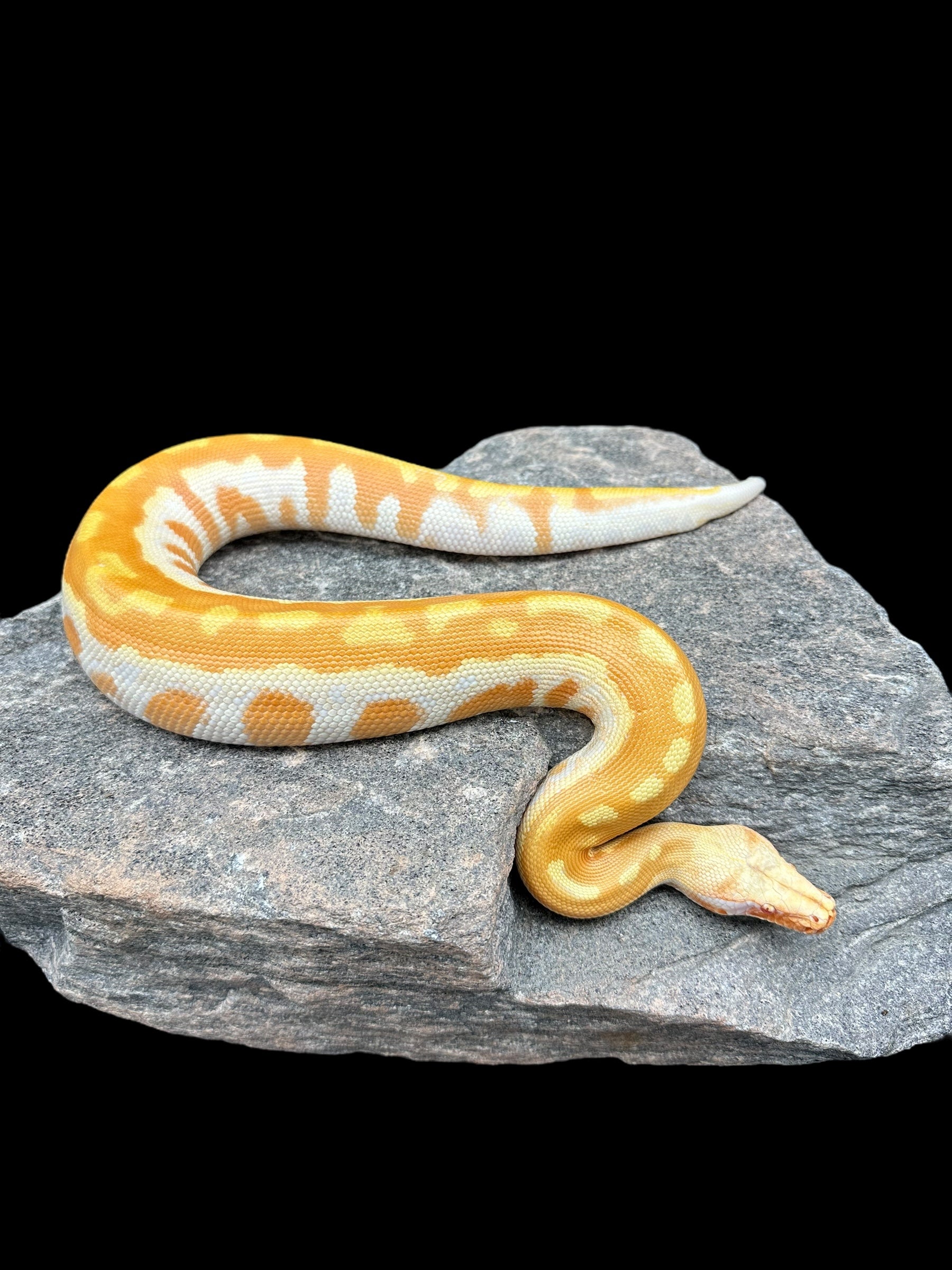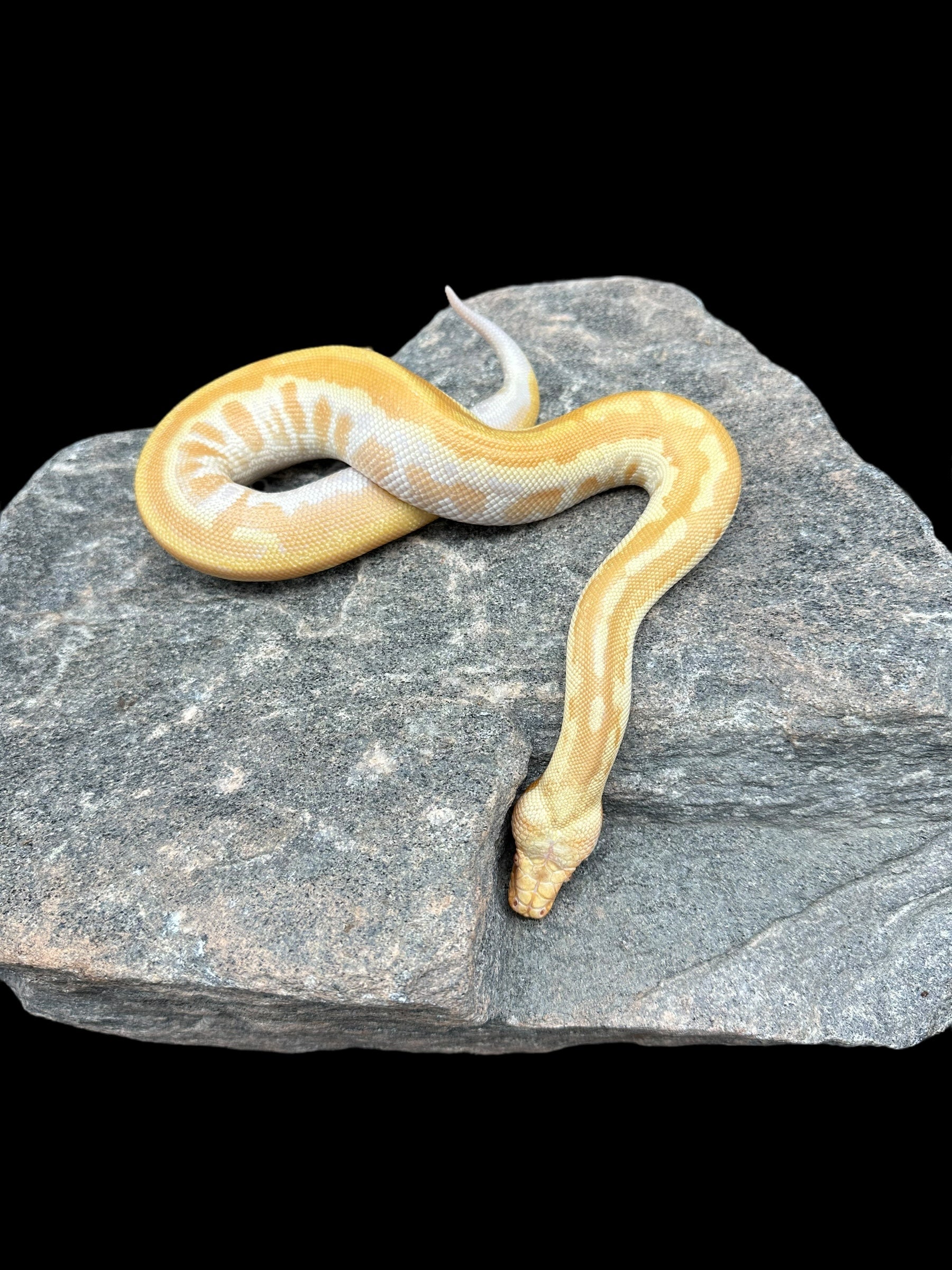Photo Disclaimer
Description
Blood Python (T- Albino Matrix)
Python brongersmai
Common Names: Blood Python, Brongersmai Python
(Matrix = co-dominant morph; T- = Tyrosinase-Negative Albino, recessive morph)
Species Overview
-
Size: Adults usually reach 4–6 feet (1.2–1.8 m), with females often being bulkier. Some large individuals may exceed 7 feet.
-
Appearance:
-
Matrix (co-dominant – visual): Alters the typical Blood Python pattern by producing fragmented, broken blotches and “flame-like” side markings, creating a more chaotic, irregular appearance.
-
T- Albino (recessive – visual): Removes all melanin, producing snakes in bright whites, yellows, and oranges with striking contrast.
-
Combined, the T- Albino Matrix displays the high-contrast brightness of T- Albino layered over the broken, chaotic patterning of Matrix, resulting in a visually striking designer morph.
-
-
Distribution: Wild-type Blood Pythons are native to Peninsular Malaysia, Sumatra, and nearby islands.
-
Habitat: They inhabit swamps, marshes, and humid lowland forests, preferring dense cover and consistently moist environments.
-
Behaviour: A terrestrial ambush predator, relying on camouflage and sudden bursts of strength to capture rodents and birds.
Captive Care
-
Enclosure: Adults thrive in enclosures around 4 ft × 2 ft × 1.5–2 ft, prioritizing floor space. Provide secure hides, deep humidity-holding substrate, and a large water dish for soaking.
-
Temperature & Humidity: Maintain basking temps at 86–88°F (30–31°C) and a cooler side at 78–80°F (25–27°C). Keep humidity at 60–70%, with increases to 80% during shedding.
-
Diet: Juveniles should be fed hopper rats or similar prey every 5–7 days; adults thrive on medium to large rats every 10–14 days. Avoid overfeeding, as Blood Pythons are prone to obesity.
-
Behaviour in Captivity: Captive-bred T- Albino Matrix Blood Pythons are typically hardy and consistent feeders, though they may be defensive when startled. With steady husbandry, they adapt well and become predictable captives.
-
Special Considerations: They do best in naturalistic, humid setups with deep substrate, which encourages burrowing and helps maintain hydration.
Genetics Note
-
Matrix (Co-Dominant – Visual): Produces reduced and broken patterning with side flames and irregular blotches.
-
Super Matrix (Homozygous = Ivory): Produces the Ivory, a pale, reduced-pattern snake that is an important base for combos.
-
T- Albino (Recessive – Visual): Expressed here, removing melanin entirely and replacing it with brilliant whites, yellows, and oranges.
-
T- Albino Matrix (Combo): A striking designer morph combining Matrix’s fragmented pattern with the intense contrast of T- Albino, resulting in bold, high-contrast animals.
The Blood Python (T- Albino Matrix) is one of the most eye-catching T- Albino combinations, pairing the chaotic pattern of Matrix with the brilliant whites and yellows of T- Albino, making it highly desirable both for display and breeding projects.


